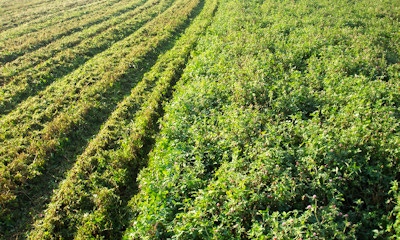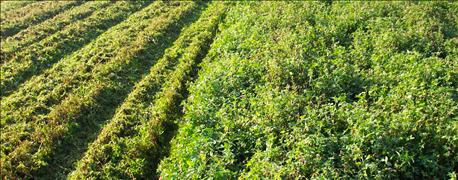July 10, 2016

Crop insurance policies include various rules with guidelines on the use of cover crops. Recent changes in these rules provide an opportunity to review their application to cover crop practices. Farmers should always communicate with their crop insurance agent to determine whether or not a specific practice will affect insurability.

A cover crop must be terminated in order for the following grain crop to be insurable.
Cover crops can generate many benefits, including providing and scavenging for nutrients, suppressing weed emergence and competition, improving water infiltration and overall soil quality, along with reducing erosion, production costs, and pests. A cover crop managed for these benefits is not considered a “crop” for crop insurance purposes, and so it cannot be insured for stand establishment, cover crop height or yield. For a crop to be insurable that is planted following a cover crop, the cover crop cannot be established for more than 12 months prior to planting the insured crop.
A cover crop must be terminated in order for the following grain crop to be insurable. Termination occurs when cover crop growth has ended and in all cases, the cover crop must be terminated before it begins heading out or budding. Prior to heading out or budding occurs, farmers have options depending on their use of irrigation and no-till. Termination can occur through environmental conditions such as frost or through a cultural, mechanical, or chemical method. Current cover crop termination rules for crop insurance in Wisconsin follow USDA NRCS guidelines.
For non-irrigated fields, these rules require that cover crops be terminated within five days of planting the insured crop. For irrigated fields, the rules require that cover crops be terminated based on the cropping system and conservation purpose, but prior to crop emergence. If the cover crop is part of a no-till system, termination can be delayed up to seven days from the above requirement, but still must be terminated prior to crop emergence.
Harvesting a cover crop
Cover crops can also be terminated through a forage harvest operation. Harvesting a cover crop for forage includes chopping silage or making hay, as well as grazing. Regardless, the cover crop must be completely terminated (i.e., no longer growing). Note that a cover crop cannot be harvested for grain or seed. In this case, it is no longer considered a cover crop, but rather a cash crop, and crop insurance rules for double cropping apply. If needed, discuss double cropping rules with your crop insurance agent.
For crop insurance purposes, overseeding and interseeding are defined as planting one or more cover crop species into an existing crop. If the cover crop and insured grain crop are established in such a way that separate agronomic practices and management cannot occur, then the cash crop is not insurable. Overseeding and interseeding a conservation cover crop does not affect the insurability of the grain crop as long as the cover crop is established in a way that does not affect harvest and yield of the cash crop. Any damage or yield loss to the grain crop caused by interseeding or overseeding a cover crop will not be covered by crop insurance and will be applied to appraised value of the cash crop, thus reducing any insurance indemnity. Finally, note that for crop insurance purposes, interplanting is defined as planting multiple species that are grown together with no distinct row pattern and in this case, separate agronomic practices are not possible and so the grain crop is not insurable.
For information on the use of cover crops on prevented planting acres and for additional information on cover crop termination please go to the full text of this review at: aae.wisc.edu/pdmitchell/CropInsurance/CCandInsurance2016.pdf
This article provides an overview of cover crop and insurance rules, but USDA-RMA makes final decisions. Your crop insurance agent can tell you whether a specific practice will affect insurability. The St. Paul Regional Office of the USDA-RMA can be reached at (651) 290-3304.
For more information, go to Cover Crops for Modern Cropping Systems
Smith is the southwest regional specialist for UW Nutrient & Pest Management. Mitchell is a University of Wisconsin-Extension state specialist in crops.
You May Also Like




